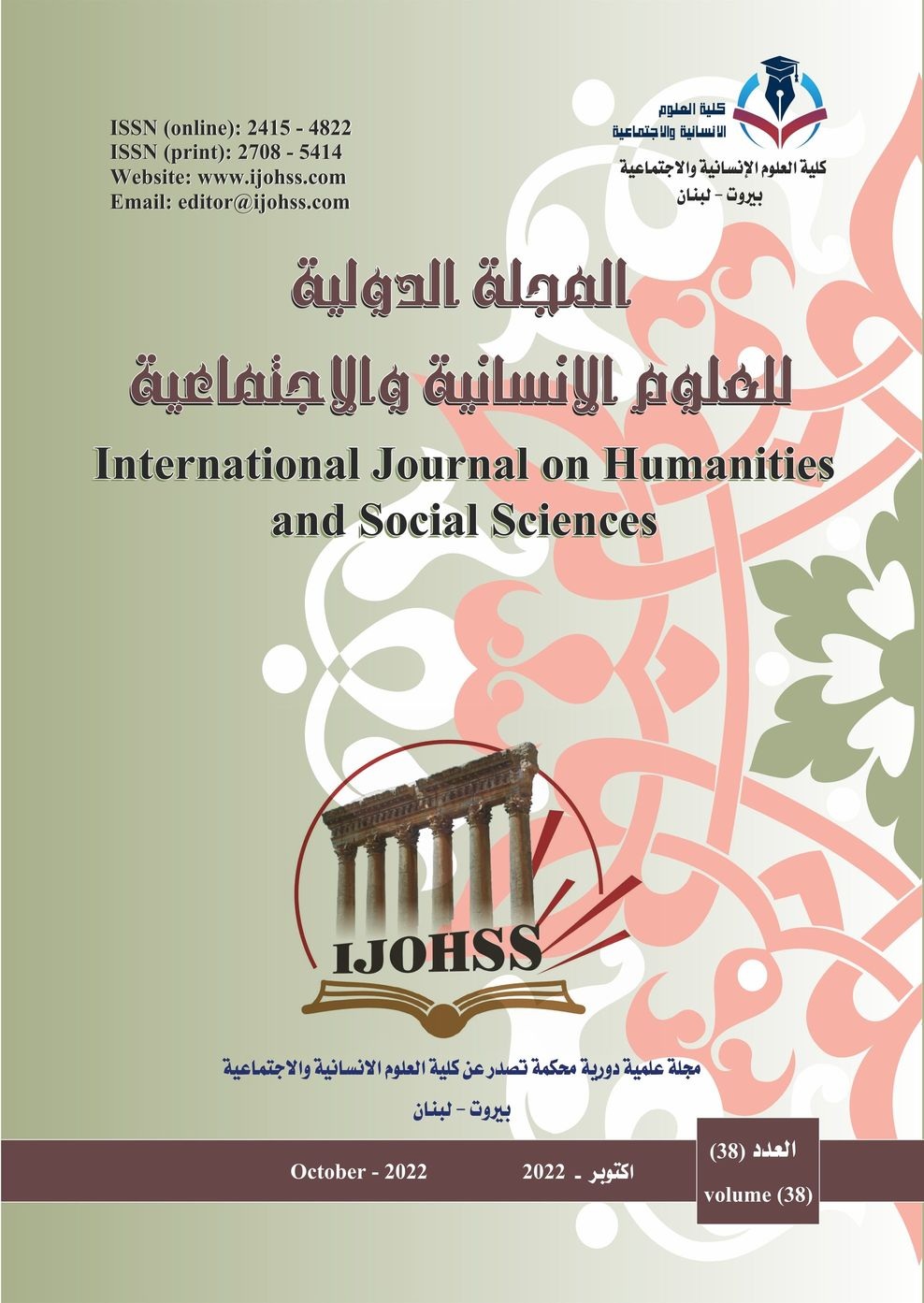The Reality of using Blended Learning in Teaching Mathematics and the Attitudes of the Middle Technical University Students towards it
Abstract
The aim of the research is to know ((the reality of the use of blended learning in teaching mathematics and the attitudes of the students of the Middle Technical University towards it)):
To implement the study, the researcher used the descriptive analytical approach, and the study sample consisted of (50) male and female students from the Middle Technical University / Institute of Technology. The study tool was prepared, which consisted of a questionnaire that included (42) items distributed in three axes: (the extent of the use of blended education, the obstacles that prevent the use of blended education, students' attitudes to the use of blended education).The results showed that the extent of the use of blended education by students was generally acceptable, as the general weighted mean reached (2.55) and the general weighted mean reached the axis of obstacles that prevent the use of blended education in teaching mathematics ( 2.108), which indicates the existence of some obstacles that hinder its use. As for students' attitudes to using blended education in general, they were good, as the general weighted mean was (2.656) and in light of the results of the study, a set of recommendations and suggestions were presented.
References
2- حسن، إسماعيل محمد إسماعيل: (2010)، التعليم المدمج، مقال منشور، مجلة التعليم الالكتروني، جامعة المنصورة،العدد 5.
3- حميد، امال :(2016)، فاعلية الفصول المنعكسة والفصول المدمجة في تنمية مهارات تصميم صفحات الويب التعليمية لطالبات كلية التربية بالجامعة الاسلامية بغزة، رسالة ماجستير غير منشورة، كلية التربية الجامعة الاسلامية، غزة، فلسطين.
4- خياط، احمد محمد بكر:(2011)، اثر استخدام استراتيجية العليم المدمج على تحصيل متدربين من الكلية التقنية بالمدينة المنورة لمادة الرياضيات واتجاهاتهم نحوها، رسالة ماجستير، كلية التربية، جامعة طيبة، المدينة المنورة.
5- خير االله ، سيد: (1981 )، بحوث نفسية وتربوية، بيروت، دار النهضة العربية.
6- دياب، سهيل رزق: (2011)،اثر استخدام ادوات تقويم متنوعة على تحصيل طلبة السابع الاساسي في مادة العلوم واتجاهاتهم نحوها، مجلة النجاح، نابلس، فلسطين.
7- الرشيدي، خالد بن محمد:(2013)، اتجاهات طلبة كلية التربية الاساسية في الكويت نحو استخدام اعضاء هيئة التدريس لتقنية العرض الالكتروني في ضوء بعض المتغيرات، رسالة ماجستير غير منشورة ، جامعة الشرق الاوسط.
8- زيتون،حسن حسين:(2005) ، رؤية جديدة في التعليم "التعلم الإلكتروني" :المفهوم –القضايا- التطبيق- التقييم، المملكة العربية السعودية، الرياض: الدار الصوتية للتربية.
9- زيتون، عايش:(2004)، اساليب تدريس العلوم، الطبعة 3، الاردن.
10- شوملي، قسطندي:(2007)، الانماط الحديثة في التعليم العالي التعليم الالكتروني المتعدد الوسائط او التعليم المتمازج، المؤتمر السادس لعداء كليات الاداب في الجامعات الاعضاء في اتحاد الجامعات العربية، ندوة ضمان جودة التعليم والاعتماد الاكاديمي، جامعة الجنان، طرابلس.
11- محمد، الاء عبد الكريم مصطفى: (2017) ، فاعلية برنامج يوظف التعلم المدمج في تنمية المهارات الاملائية لدى طلبة الصف الثاني الاساس بمدارس وكالة الغوث في غزة رسالة ماجستير، كلية التربية في الجامعة الاسلامية بعزة.
12- المعايطة، خليل عبد الرحمن: (2005)، علم النفس التربوي، دار الفكر ناشرون وموزعون.
13- ولي، باسم محمد ومحمد، محمد جاسم: (2004) المدخل إلى علم النفس الاجتماعي ، دار الثقافة للنشر والتوزيع، عمان، الاردن.
14- وريكات، منصور: (2020)، مدى استخدام التعليم المدمج في تدريس المساقات العلمية في الجامعات الاردنية اثناء جائحة كورونا، مجلة رماح للدراسات والابحاث، 4(2).
15- الإبراهيم، محمد: (2005) ،أثر طريقة التدريس المدعمة باستخدام الحاسوب في تحصيل طلبة المرحلة الأساسية في الرياضيات واتجاهاتهم نحو الرياضيات واستخدام الحاسب في تدريسها، رسالة دكتوراه، غير منشورة، جامعة عمان العربية، الأردن.
16- Ahmad F., Shafie A., J. (2008) Electronic Proceedings of The Thirteenth Asian Technology Conference in Mathematics SSRU, Thailand.
17- Charles D. Dziuban, Joel L. Hartman& Patsy D. Moskal (2004), Blended Learning, EDUCAUSE Center for Applied Research (ECAR) Research Bulletin, vol. 2004, issue 7 (March 30, 2004): 11.
18- Chiang, P. J. (2017). The effect of blended learning in mathematics course. Eurasia Journal of Mathematics, Science & Technology Education, 13(3).
19- Rodríguez, G.; Quesada-Serra, V. & Ibarra-Sais, S: (2016), Learning-oriented E- Assessment: The effects of a training and guidance program on lecturers' perceptions, Assessment & Evaluation in Higher Education, 41 (1), 35-52.
20- Singh, H. (2003). Building Effective Blended Learning Programs. Issue of Educational Technology, 43(6). 51-54, Nov-Dec.
21- Yamagata-Lynch, L. C. (2014). Blending online asynchronous and synchronous learning. International Review of Research in Open and Distributed Learning, 15(2), 189-212.
Copyright (c) 2022 م.م. إنعام شاكر خضير

This work is licensed under a Creative Commons Attribution-NonCommercial-NoDerivatives 4.0 International License.



